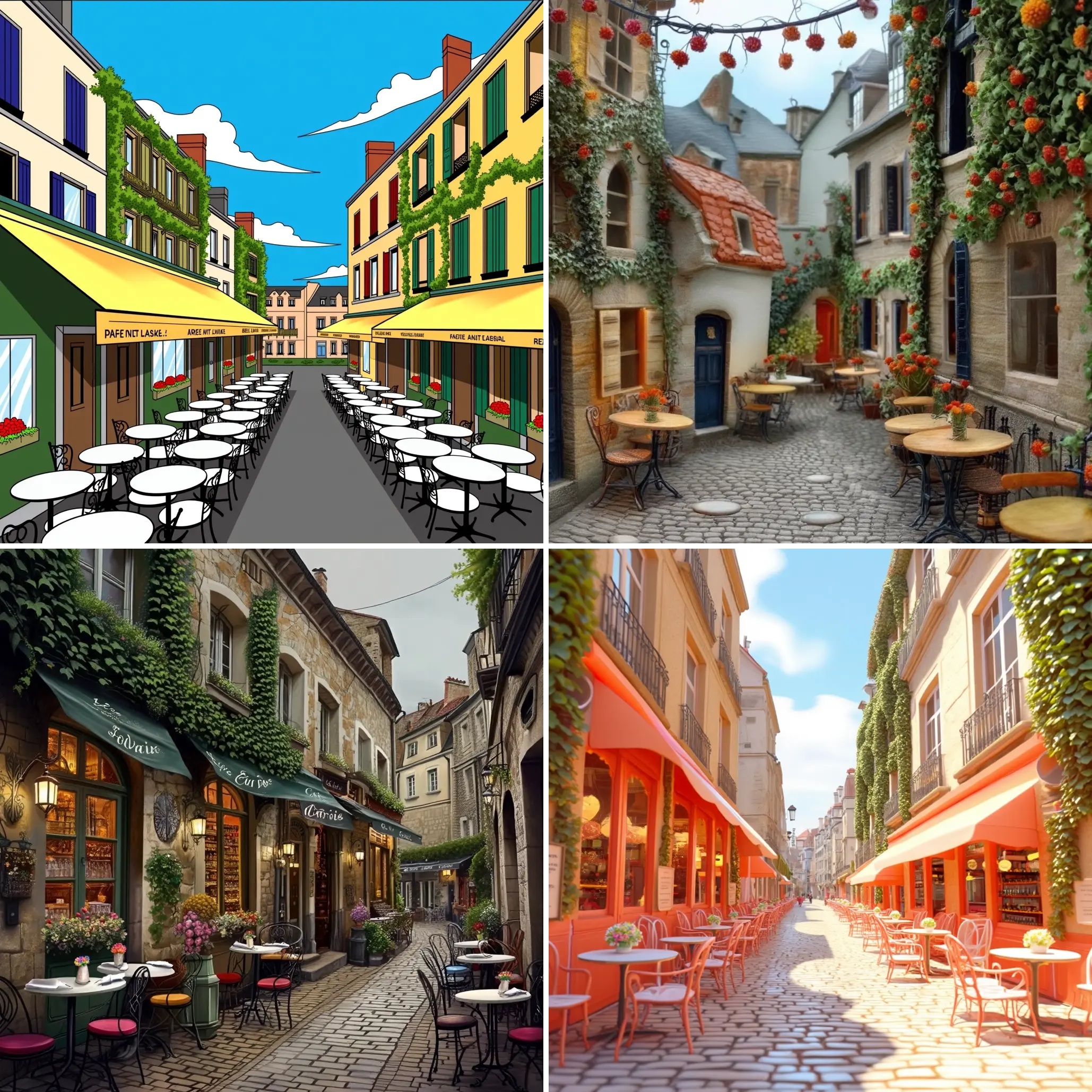ComfyUI Node: Fooocus LoraStack
Fooocus LoraStack
CategoryFooocus
Seedsa (Account age: 2892days) Extension
ComfyUI Fooocus Nodes Latest Updated
2025-01-08 Github Stars
0.09K
How to Install ComfyUI Fooocus Nodes
Install this extension via the ComfyUI Manager by searching for ComfyUI Fooocus Nodes- 1. Click the Manager button in the main menu
- 2. Select Custom Nodes Manager button
- 3. Enter ComfyUI Fooocus Nodes in the search bar
Visit ComfyUI Online for ready-to-use ComfyUI environment
- Free trial available
- 16GB VRAM to 80GB VRAM GPU machines
- 400+ preloaded models/nodes
- Freedom to upload custom models/nodes
- 200+ ready-to-run workflows
- 100% private workspace with up to 200GB storage
- Dedicated Support
Fooocus LoraStack Description
Manage and apply multiple LoRA models for AI art projects, enabling stacking and configuration for artistic effects.
Fooocus LoraStack:
The Fooocus LoraStack node is designed to help you manage and apply multiple LoRA (Low-Rank Adaptation) models in your AI art projects. This node allows you to stack and configure several LoRA models, each with its own strength, to fine-tune the output of your AI-generated images. By enabling or disabling the stack and specifying the number of LoRA models to use, you can achieve a wide range of artistic effects and styles. The primary goal of this node is to provide flexibility and control over the application of LoRA models, making it easier for you to experiment with different combinations and strengths to achieve your desired results.
Fooocus LoraStack Input Parameters:
toggle
The toggle parameter is a boolean option that allows you to enable or disable the stacking of LoRA models. When set to True, the node will process and stack the specified LoRA models. When set to False, the node will return an empty stack. This parameter helps you quickly switch between using and not using the LoRA stack without changing other settings. Options: [True, False].
num_loras
The num_loras parameter specifies the number of LoRA models you want to stack. This integer value determines how many LoRA models will be processed and included in the stack. The higher the number, the more LoRA models you can combine, allowing for more complex and nuanced effects. Minimum value: 0, Maximum value: 10, Default value: 1.
optional_lora_stack
The optional_lora_stack parameter allows you to provide an existing stack of LoRA models that can be extended with additional models specified in the node. This parameter is useful if you have a pre-configured stack that you want to build upon. The provided stack should be in the format of a list of LoRA model names and their corresponding strengths. Type: LORA_STACK.
lora_1_name, lora_2_name, ..., lora_10_name
These parameters (lora_1_name to lora_10_name) allow you to specify the names of the LoRA models you want to include in the stack. Each parameter corresponds to a different LoRA model, and you can select from a list of available models or choose None if you do not want to use a particular slot. Default value: None.
lora_1_strength, lora_2_strength, ..., lora_10_strength
These parameters (lora_1_strength to lora_10_strength) allow you to set the strength of each corresponding LoRA model in the stack. The strength value is a float that determines the influence of the LoRA model on the final output. Higher values increase the model's impact, while lower values reduce it. Minimum value: -10.0, Maximum value: 10.0, Default value: 1.0, Step: 0.01.
Fooocus LoraStack Output Parameters:
lora_stack
The lora_stack output parameter returns the final stack of LoRA models that have been processed and configured based on the input parameters. This stack is a list of LoRA model names and their corresponding strengths, which can be used in subsequent nodes or processes to apply the desired effects to your AI-generated images. The output provides a flexible and customizable way to manage and apply multiple LoRA models in your projects.
Fooocus LoraStack Usage Tips:
- To achieve subtle effects, use lower strength values for your LoRA models. This allows for more nuanced adjustments without overpowering the original image.
- Experiment with different combinations of LoRA models to discover unique styles and effects. The order and strength of each model can significantly impact the final result.
- Use the
toggleparameter to quickly compare the effects of using the LoRA stack versus not using it. This can help you decide whether the stacked models enhance your project.
Fooocus LoraStack Common Errors and Solutions:
Invalid base_resolution format.
- Explanation: This error occurs when the resolution format provided is incorrect or cannot be parsed.
- Solution: Ensure that the resolution is specified in the format
width x height, where both width and height are integers. For example,1920 x 1080.
Missing or invalid LoRA model name.
- Explanation: This error occurs when a specified LoRA model name is missing or set to
None. - Solution: Check that all specified LoRA model names are valid and not set to
None. Ensure that the model names are correctly listed in the input parameters.
Strength value out of range.
- Explanation: This error occurs when a strength value for a LoRA model is outside the allowed range.
- Solution: Ensure that all strength values are within the range of
-10.0to10.0. Adjust any values that fall outside this range to be within the acceptable limits.
Fooocus LoraStack Related Nodes
RunComfy is the premier ComfyUI platform, offering ComfyUI online environment and services, along with ComfyUI workflows featuring stunning visuals. RunComfy also provides AI Playground, enabling artists to harness the latest AI tools to create incredible art.


